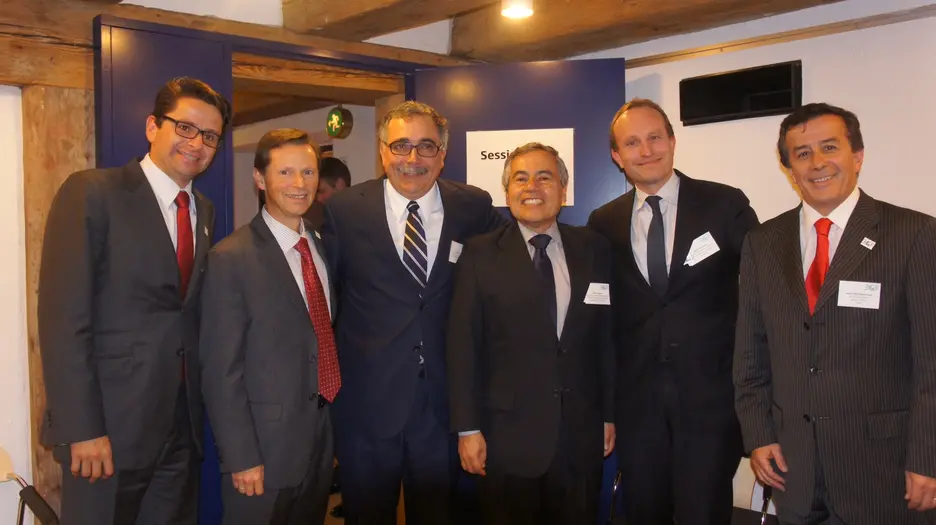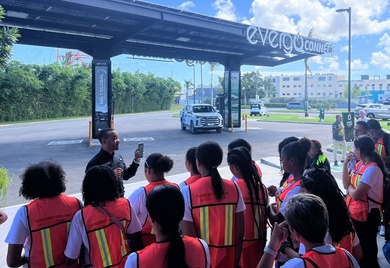Five ways the IDB is scaling up green private sector investment

[caption id="attachment_378" align="alignleft" width="300"]![[from left to right] me, IDB Mexican Undersecretary of Development and Environmental Regulation Ing. Cuauhtémoc Ochoa Fernández, IDB Chief of Climate Change and Sustainability, Walter Vergara; Costa Rican Minister of Environment, Energy and Telecommunication, René Castro Chilean Deputy Secretary of Energy, Sergio del Campo Fayet; Martin Lidegaard, Danish Minister for Climate, Energy and Building](http://blog.iic.org/wp-content/uploads/2013/11/3GF-Copenhagen2.jpg) IDB Mexican Undersecretary of Development and Environmental Regulation Ing. Cuauhtémoc Ochoa Fernández; me; Costa Rican Minister of Environment, Energy and Telecommunications, René Castro; IDB Chief of Climate Change and Sustainability, Walter Vergara; Danish Minister for Climate, Energy and Buildings, Martin Lidegaard; Chilean Deputy Secretary of Energy, Sergio del Campo Fayet.[/caption]1. Leveraging our multilateral position to broker PPPs
IDB Mexican Undersecretary of Development and Environmental Regulation Ing. Cuauhtémoc Ochoa Fernández; me; Costa Rican Minister of Environment, Energy and Telecommunications, René Castro; IDB Chief of Climate Change and Sustainability, Walter Vergara; Danish Minister for Climate, Energy and Buildings, Martin Lidegaard; Chilean Deputy Secretary of Energy, Sergio del Campo Fayet.[/caption]1. Leveraging our multilateral position to broker PPPs
Public-private partnerships (PPPs) in which both sectors take risk on green investments will bridge the financing gap for sustainable energy. Upstream, the IDB works with policymakers to ensure that PPP tenders and contracts are bankable while promoting positive environmental opportunities.
Downstream, the IDB is transacting. Strategically positioned to provide two critical components of any PPP - sovereign guaranteed loans and non-sovereign guaranteed loans, the IDB recently approved a US$298 million loan to the Reventazon Hydropower Project in Costa Rica – composed of US$200 million from the private sector and US$98 from the public side. The project will provide 10% of Costa Rica’s installed generation capacity
2. Fostering South-South capital flows
As the North-South paradigm shifts, we increasingly leverage South-South capital flows to bring resources and technological expertise to the region. Last year the IDB launched the China Co-Financing Fund for Latin America and the Caribbean that is managed by the IDB and counts on a US$2 billion contribution from the People’s Bank of China. The Fund seeks to provide US$500 million in public sector and US$1.5 billion in private sector loans to bridge the financing gap for development projects. Potential investments will be selected based on high environmental and social standards and impacts.
3. Mobilizing public and donor funding
To bring green investment to scale, the IDB recognizes the risks involved in new technologies and deal structures. Public capital can incentivize lowering the barriers to private sector investment. As mentioned before in this blog, donor and public funds can take higher levels of risk and offer reimbursable resources especially useful in newer markets and sectors. In Chile, the IDB recently financed the first large-scale solar plant Pozo Almonte, in which the Canadian Climate Fund financed 25% of project costs.
4. Strengthening market knowledge
The IDB has many teams dedicated to addressing the climate crisis and advancing green growth. Our staff has technical expertise on issues ranging from renewable energy to biodiversity initiatives. We employ a mix of financial professionals, economists, engineers and environmental scientists to tackle the multi-dimensional angles of designing and executing projects focused on positive results in Latin America and the Caribbean. We continually invest in capacity building and expert consultations to stay ahead of the constantly evolving field.
5. Prioritizing energy efficiency
Scaling up green investment without contemplating energy efficiency is like a boat on a windy day without sails. Energy efficiency allows many economic sectors, even households, to go the distance when it comes to lowering greenhouse gas emissions. The IDB provides no-cost engineering energy audits for retrofits and loans to financial intermediaries to on-lend to energy efficient design and execution. We also work with corporates. A loan to La Internacional - a textile plant in Ecuador that makes denim jeans - included an energy audit and efficiency measures for plant expansion.
Other innovative programs utilize guarantees from donors such as the Global Environment Facility (GEF), Nordic Development Fund (NDF) and Clean Technology Fund (CTF) to finance cutting-edge energy efficiency technologies and assist countries to develop their energy service company (ESCO) industries. Our Brazil Energy Efficiency Guarantee Mechanism targets commercial buildings – a landmark facility that is the first guarantee fund in the world to cover performance risk of energy efficiency projects and borrower credit risk. Given that buildings have lifetimes up to 50 years, constructing them sustainably today is urgent.
Through knowledge-sharing platforms like 3GF, the IDB has the opportunity to share experiences with other leaders. Thanks to a recent institutional partnership signed in Copenhagen, we can do more to accelerate Latin American and the Caribbean green growth and change the course for a low-carbon economy in the future.
LIKE WHAT YOU JUST READ?
Subscribe to our mailing list to stay informed on the latest IDB Invest news, blog posts, upcoming events, and to learn more about specific areas of interest.
Subscribe



